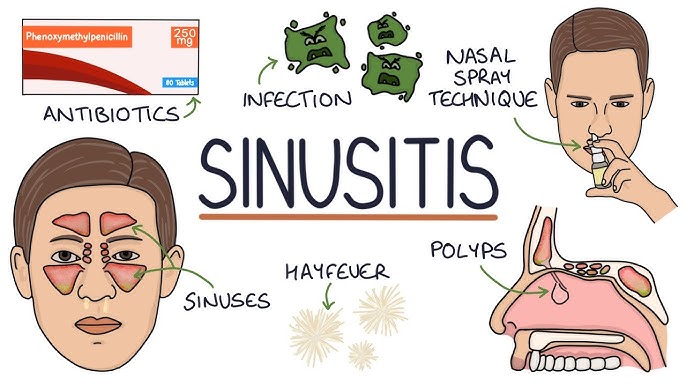Acute maxillary sinusitis, commonly referred to as a sinus infection, is an inflammation of the maxillary sinuses—the air-filled cavities located behind the cheekbones. When this condition is caused by the bacterium Haemophilus influenzae, it is termed acute maxillary Haemophilus influenzae sinusitis. This article delves into the symptoms, microbiology, and treatment options for this specific type of sinusitis.

Understanding Acute Maxillary Sinusitis
Acute maxillary sinusitis is characterized by the sudden onset of inflammation in the maxillary sinuses, often following an upper respiratory tract infection. The inflammation leads to the accumulation of mucus, resulting in the characteristic symptoms of sinusitis.
Symptoms of Acute Maxillary Haemophilus Influenzae Sinusitis
The symptoms of acute maxillary sinusitis can vary but typically include:
- Headache: A dull, constant pain in the forehead or around the eyes.
- Facial Pain or Pressure: Discomfort or a feeling of fullness in the cheeks, upper jaw, or around the eyes.
- Nasal Congestion: Difficulty breathing through the nose due to blocked nasal passages.
- Purulent Nasal Discharge: Thick, yellow or green mucus from the nose.
- Cough: A persistent cough, often worse at night.
- Fever: Elevated body temperature, though not always present.
- Fatigue: A general feeling of tiredness or malaise.
In children, additional symptoms may include irritability, poor appetite, and swelling around the eyes.
Microbiology of Acute Maxillary Sinusitis
The primary pathogens responsible for acute maxillary sinusitis include:
- Streptococcus pneumoniae: A gram-positive bacterium commonly found in the upper respiratory tract.
- Haemophilus influenzae: A gram-negative bacterium that can cause respiratory tract infections.
- Moraxella catarrhalis: A gram-negative bacterium associated with respiratory infections.
Studies have shown that 70% of cases of community-acquired acute sinusitis in adults and children are caused by Streptococcus pneumoniae and Haemophilus influenzae.
Diagnosis of Acute Maxillary Haemophilus Influenzae Sinusitis
Diagnosing acute maxillary sinusitis involves:
- Clinical Evaluation: Assessing symptoms such as facial pain, nasal discharge, and cough.
- Physical Examination: Palpating the sinuses to check for tenderness and transillumination to detect fluid-filled sinuses.
- Imaging: Utilizing X-rays or CT scans to visualize sinus inflammation.
- Microbiological Cultures: In some cases, obtaining a sample from the sinuses to identify the causative organism.
Treatment Options
Treatment for acute maxillary Haemophilus influenzae sinusitis may include:
- Antibiotics: Prescribing antibiotics effective against Haemophilus influenzae, such as amoxicillin-clavulanate.
- Nasal Decongestants: Using over-the-counter medications to reduce nasal congestion.
- Saline Nasal Irrigation: Rinsing the nasal passages with saline solution to clear mucus.
- Analgesics: Taking pain relievers like acetaminophen or ibuprofen to alleviate discomfort.
- Corticosteroids: In some cases, nasal corticosteroids may be prescribed to reduce inflammation.
It’s important to complete the full course of antibiotics as prescribed to ensure the infection is fully eradicated.
Prevention Strategies
To reduce the risk of developing acute maxillary sinusitis:
- Practice Good Hygiene: Regular handwashing can prevent the spread of respiratory infections.
- Avoid Smoking: Smoking can impair mucociliary clearance and increase susceptibility to infections.
- Manage Allergies: Controlling allergic rhinitis can reduce inflammation in the nasal passages.
- Stay Hydrated: Drinking plenty of fluids helps keep the mucus thin and promotes drainage.
Prognosis
With appropriate treatment, the prognosis for acute maxillary Haemophilus influenzae sinusitis is generally favorable. Most individuals recover fully within a few weeks. However, if symptoms persist or worsen, it is essential to consult a healthcare provider to rule out complications or the need for alternative treatments.
Understanding the pathophysiology and management of acute maxillary Haemophilus influenzae sinusitis is crucial for effective treatment and prevention. By recognizing the symptoms early and seeking appropriate medical care, individuals can achieve a swift recovery and reduce the risk of complications.